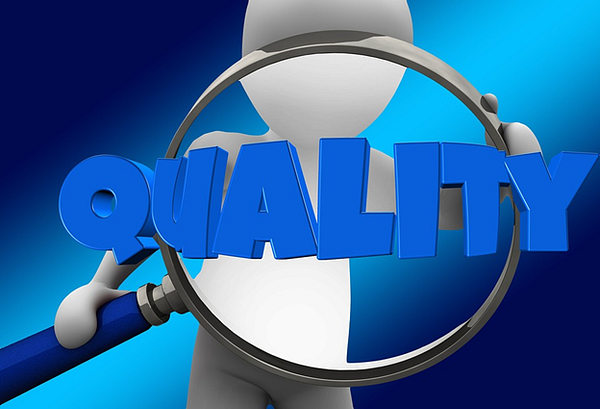Each year, there are a host of changes to clinical quality measure logic, reporting requirements and CMS quality program policy. And currently, the usual cycle of CQM turnover is joined by an overhaul of CQM logic methodology for the 2019 CQM definitions: Clinical Quality Language (CQL).
Suffice it to say, there’s a lot to keep on your radar right now in the CQM world. And the deadline for eCQM submission will be here before we know it:
- Hospital Quality Reporting: February 28, 2019, 11:59pm PT
- Quality Payment Program (MIPS) eCQMs (non-Web Interface submission): April 2, 2019, 5pm PT
We prepared two posts to break down and interpret some of the changes that have occurred in 2018 and those that are coming in 2019. Our goal is to provide some action steps for CQM implementers.
The changes for 2018 submission
fall into four categories:
- Value Set: changes to official codes and code sets used by CMS quality measures
- Measure Specification and Logic: changes in the manner of calculation and/or specific codes and code sets included in each measure
- QRDA-I/III format and submission: changes in the XML requirements (QRDA-I or QRDA-III) for major CQM reporting programs (such as MIPS, HQR and Joint Commission)
- Reporting: changes in high-level quality reporting program requirements
For those reporting Joint Commission (TJC) ORYX eCQM in
addition to CMS, it’s important to note that TJC has aligned their measures
closely with CMS, but there are some programmatic changes they we’ll note
below.
As you dig into the changes, an invaluable resource is the eCQI Resource Center,
hosted by CMS. The eCQI site also has an annual Implementation Checklist that
is helpful in preparing for CQM submission. The Implementation steps contain a
list of steps to understand year-over-year changes.
To varying degrees, these changes require workflow and/or
back-end changes by EHR vendors. But take heart – if the data exists somewhere,
Dynamic Health IT’s quality measure bolt-on software, CQMsolution, can take
care of the rest.
Value Set Changes
The National Library of Medicine (NLM) maintains the Value
Set Authority Center (VSAC), which releases value set updates annually. The
entirety of these value set changes are incorporated into our CQMsolution
application each release year, with backward compatibility maintained for
previous reporting years.
The update of value set changes contains changes that have
the potential to affect all eCQMs in a given release year. The only way to
fully implement these changes is to be sure that value sets and their
respective codes crosswalk perfectly to the VSAC release.
VSAC also includes some retired and legacy codes in order to
accommodate a lookback period for measure calculation, so it’s important to
keep in mind that the eCQM value sets do not always correspond to strictly the
latest version of any code set (such as ICD-10 vs ICD-9). CMS makes a
determination of which code system versions they will approve for use during
the measure year.
Measure and Measure Logic Changes
While the high-level identifier (eg, “CMS 2”) and
description for measures may stay the same across years, each year generally
brings a new batch of measure versions.
The United States Health Information Knowledgebase (USHIK)
offers a comparison tool for visualizing changes in measures across years. The
tool is accessible directly
from the eCQI Resource Center.
Changes to the measure specifications can range from
adjusted wording in the measure overview to an adjustment to how a measure
population is calculated. For instance, in 2018, CMS 128 added an exclusion for
patients who were in hospice care during the measurement year.
Each measure release year also has a Technical Release Notes
document attached. Where the USHIK compare tool has a side-by-side descriptive
comparison, the Release Notes provide granular list of all changes to a
measure. These changes must be incorporated into the measure logic used to
power all reporting and this update is done within CQMsolution’s calculation
engine 12-16 months in advance of measure reporting cycles.
QRDA-I/III reporting format changes
Each year, there are changes great and small to the formatting of XML documents that must be submitting for both eligible clinicians (ECs) and eligible hospitals (EH). Many of these changes are absorbed directly into the files themselves. However, here are the changes that have the potential to affect data capture and workflow on the provider side:
Eligible Hospital QRDA-Is
(patient-level XML file):
- Medicare
Beneficiary Identifier (MBI) is not required for HQR but can and should be
be submitted if the payer is Medicare and the patient has an MBI
- CMS
EHR Certification Identification Number is now required for HQR.
- TIN
is no longer required
Eligible Clinician QRDA-IIIs
(aggregate XML file or JSON via API):
- The
performance period under MIPS can be reported at either of the following
levels:
- The
individual measure level for the MIPS quality measures and at the
individual activity level for the MIPS improvement activities (IA), or
- The
performance category level for Quality and IA performance categories
- Virtual
Groups can now be reported in QRDA-III (under a CMS program name code
created called “MIPS_VIRTUALGROUP”)
- Eight
new Promoting Interoperability PI measures can be reported to indicate
active engagement with more than one registry.
- The
2015 Edition (c)(4) filter certification criterion (45 CFR 170.315(c)(4))
is no longer a requirement for CPC+ reporting (practices must continue to
report eCQM data at the CPC+ practice site level)
For eligible clinicians submitting via API to the Quality Payment Program (as opposed to file upload), the QRDA-III file is converted to JSON (or is submitted directly via JSON). In 2018, some technical changes have been made to that process and updates to measure names to include "Promoting Interoperability (PI)" in the identifiers.
ECs can submit via API when using the Registry method. Dynamic Health IT is an authorized Registry with API submission privileges to QPP.
Reporting changes
For eligible clinicians, there were changes in 2018 related
to both measures lists and measure count thresholds for reporting. The overall
list of CMS-sanctioned eCQMs previously shrunk in 2017 and in 2018 CMS added
two EP eCQMs:
- CMS347v1
- CMS645v1
Note that these measures are NOT available for Medicaid EHR
Incentive Program for Eligible Professionals.
In 2017, clinicians could submit a minimum of 1 measure for
1 patient for 1 day. But for 2018 data, clinicians must submit at least 6
measures for the 12-month performance period (January 1 - December 31, 2018).
The percentage of the overall MIPS score comprising quality has also been
modified from 60 to 50%.
As in 2017, hospitals will still select at least four (4) of
the 15 available electronic clinical quality measures (eCQMs) for one
self-selected quarter of 2018 data (Q1, Q2, Q3, or Q4) during the same
reporting period.
In 2017, the Joint Commission’s ORYX eCQM reporting was
modified to require a minimum of four eCQMs, over a minimum of one
self-selected calendar quarter. This will remain the same in 2018.
Bringing it all back home
The most important consideration for EHR vendors is to
minimize workflow impacts for the user interface and user processes, while
ensuring adequate data capture for CQM calculation and reporting. One virtue of
using a calculation and analysis package such as CQMsolution is that once
you’ve captured and mapped the data elements, we handle all of the changes
described above. That means you can beginning running reports as soon as data
is available.



No comments:
Post a Comment